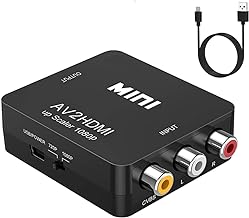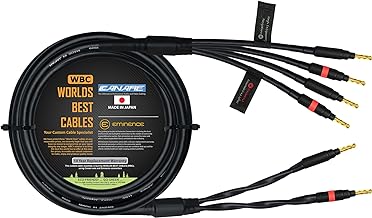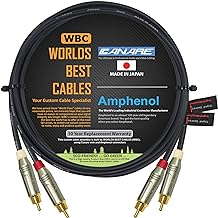5 important factors worth considering when looking for the best hd antenna
When buying a high-definition (HD) antenna, it’s important to consider a few key factors to make sure you get the best viewing experience possible. Whether you want to stop using cable and just watch free broadcast signals or improve your current TV setup, factors like signal quality, range, ease of installation, and design can greatly affect how well your HD antenna works. Thinking about these factors will not only make your TV-watching experience better but also help technology fit smoothly into your daily routine.
See our guide to the best hd antenna.
Signal range
When looking into buying an HD antenna, it’s important to consider the signal range. This range can directly impact how well you see your TV shows. Choosing an antenna with a wider signal range can give you more channels and better picture quality. With a larger range, you can pick up channels that a shorter-range antenna might not be able to get, giving you a greater variety of shows to watch. Getting an HD antenna with a good signal range is like finding a treasure chest of TV options, making sure you can watch lots of content without any loss in quality.
A strong signal range can also make your TV signal more stable, reducing the chances of interruptions or bad reception when the weather is bad. By choosing an HD antenna with a strong signal range, you’re protecting your entertainment from outside influences that could mess up your viewing. Whether it’s windy, rainy, or snowy outside, a high-quality antenna with a long signal range means you can keep enjoying your favorite shows without any problems. Thinking about signal range when buying an HD antenna can improve your TV watching experience by providing reliable access to many channels for an immersive entertainment experience.
VHF/UHF compatibility
When buying an HD antenna, it’s important to think about whether it can pick up both VHF (Very High Frequency) and UHF (Ultra High Frequency) signals for the best TV reception. Some antennas can get both types of signals, while others focus on only one. VHF signals usually have big network channels, while UHF signals are for local stations. That’s why it’s crucial to choose an antenna that supports both to get all the channels you want. If you don’t, you might miss important shows or have bad reception, which can ruin your TV-watching experience. So, it’s smart to get an antenna that can capture both VHF and UHF signals to enjoy a wide range of shows without any interruptions.
An HD antenna that works with VHF and UHF signals is versatile and reliable for getting clear channels. By making sure the antenna can pick up both types of signals, you can watch a variety of shows without any limitations. This better reception allows you to watch local news, network programs, sports games, and more in high definition. That’s why it’s important to choose an HD antenna that is compatible with VHF and UHF signals to make the most of your TV-viewing experience. This technology expands the channels you can watch and ensures a strong signal, so you can enjoy your favorite shows without any issues.
Indoor vs outdoor use
When deciding between an indoor or outdoor HD antenna, personal preference and practicality are key factors to consider. Indoor antennas are easy to set up and are good for people in cities or rental homes where outdoor installation is difficult. However, indoor antennas may struggle in areas with a lot of interference or far from broadcast towers. Outdoor antennas, on the other hand, usually have better reception because they are higher up and larger, making them better for rural areas or places with obstructed views.
The decision between indoor and outdoor antennas depends on your individual needs. If you live in a city and want a quick setup, an indoor antenna can work well for local channels and popular networks. But if you live in a remote area with tough terrain, investing in an outdoor antenna may be worth it for a clearer signal. Consider factors like signal strength, location, and obstacles when choosing between indoor and outdoor antennas to get the best performance and enjoy your favorite TV shows.
Multi-directional vs directional
When choosing between a multi-directional and directional HD antenna, it can feel overwhelming. Directional antennas are great for strong signals in one direction, while multi-directional antennas can capture signals from different angles. The best choice depends on personal preferences and location.
To find the right HD antenna, it’s important to consider the benefits of both multi-directional and directional antennas. Directional antennas are best for precise signal reception, while multi-directional antennas are good for capturing signals from multiple towers. Ultimately, the decision comes down to balancing the channels you want with the terrain around you.
Amplification capabilities
When buying an HD antenna, it’s important to consider how well it can boost your signal. Amplification is key for improving weak signals, especially in areas with interference or far from broadcast towers. Not all antennas are the same, and ones with better amplification can really enhance your signal strength and picture quality. By getting an HD antenna with strong amplification, you can enjoy clearer images and smoother video streaming for a better viewing experience.
Having good amplification can also help you access more channels with your antenna. With the right technology, you can pick up a wider variety of channels, even ones you couldn’t get with a regular antenna. This gives you more entertainment choices, from local news and sports to international programs. Prioritizing amplification when choosing an HD antenna can greatly improve the quality and amount of content you can watch, making your viewing experience much better.
Conclusion
In today’s world where streaming services reign, the HD antenna shines as a simple and dependable option. It provides clear, free access to local channels without needing monthly fees or dealing with buffering problems. Despite its basic appearance, the HD antenna can easily deliver high-definition content, appealing to those who want a great viewing experience without spending too much. While technology advances rapidly, the modest HD antenna stays reliable, connecting the old and new ways of watching TV. Its lasting popularity comes from not only its usefulness but also its reminder of the timeless enjoyment of television in its simplest form. Want more info on mtb saddles, check the best mtb saddles.


